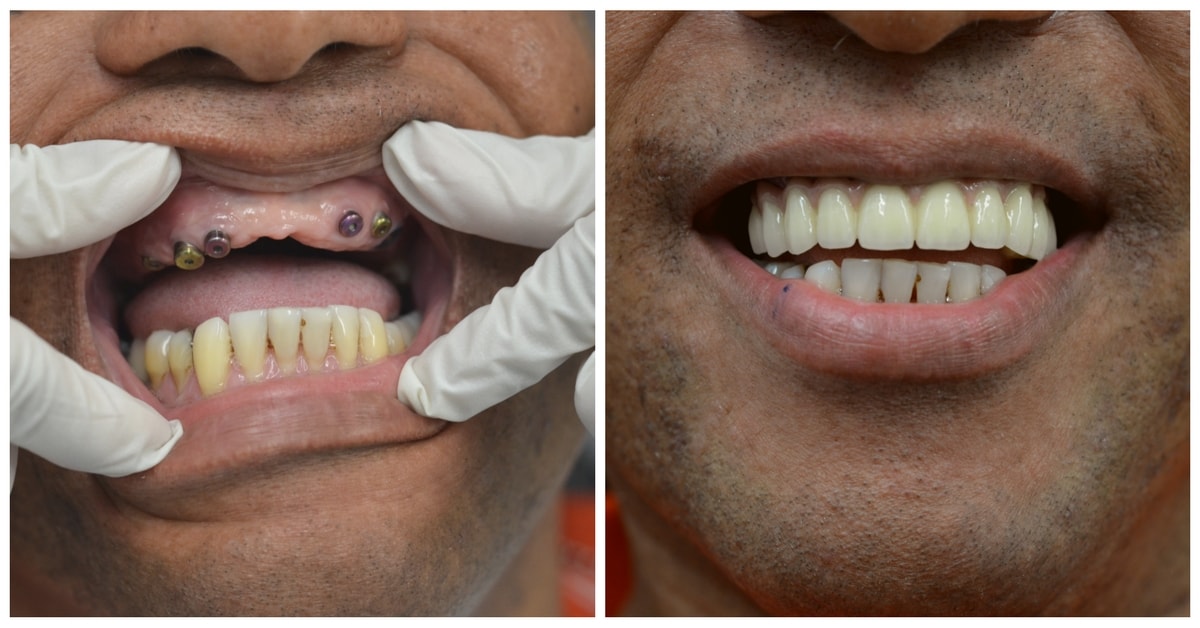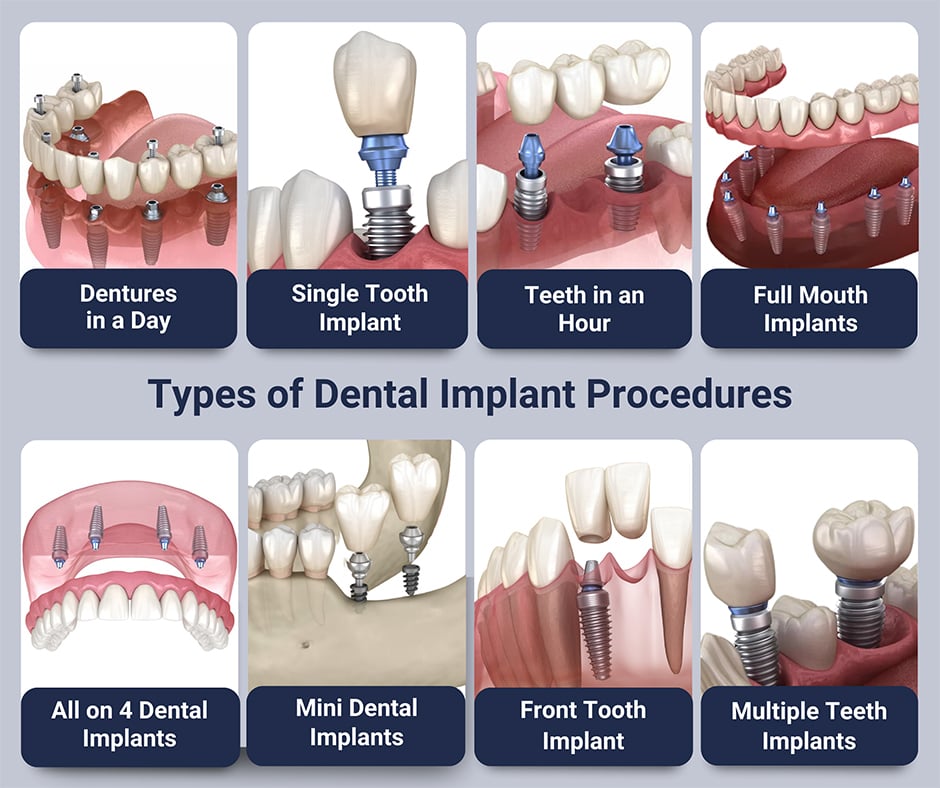Some Of Dental Implants
Some Of Dental Implants
Blog Article
The 8-Minute Rule for Dental Implants
Table of ContentsUnknown Facts About Dental ImplantsA Biased View of Dental ImplantsThe Greatest Guide To Dental ImplantsSome Known Questions About Dental Implants.
are medical gadgets surgically implanted right into the jaw to recover an individual's capacity to eat or their appearance. They supply support for fabricated (phony) teeth, such as crowns, bridges, or dentures. When a tooth is shed as a result of injury or disease, an individual can experience difficulties such as quick bone loss, faulty speech, or adjustments to eating patterns that cause pain.
Structure of The Oral Implant System choosing dental implants, speak to your dental service provider regarding the possible benefits and dangers, and whether you are a prospect for the treatment. Points to take into consideration: Your overall health is an essential aspect in establishing whether you are an excellent prospect for dental implants, how much time it will take to heal, and how much time the implant may remain in place.
Smoking cigarettes may influence the healing procedure and lower the long-term success of the implant. The healing process for the dental implant body might take several months or longer, during which time you generally have a short-lived abutment instead of the tooth. the dental implant procedure: Meticulously follow the dental health directions provided to you by your oral supplier.
Some Known Questions About Dental Implants.
Implant failing can cause the demand for one more operation to repair or change the dental implant system. Restores the ability to chew Restores aesthetic look Assists keep the jawbone from diminishing because of bone loss Protects the health and wellness of the bordering bone and periodontals Aids keep nearby (nearby) teeth secure Enhances quality of life Damage to surrounding all-natural teeth during dental implant positioning Injury to the surrounding cells throughout surgical procedure, such as sinus perforation Injury during surgical procedure (for example, crack of bordering jawbone) Poor function, such as seeming like the teeth do not bite together usually A feeling that the tooth is loose or twisting in position resulting from an abutment screw loosening Implant body failing (looseness of the implant body) because of systemic infection, which might be most likely in patients with unrestrained diabetes because of local infection in bone and gum tissues sustaining the dental implant body as a result of postponed healing, which may be a lot more likely in individuals that smoke Problem cleansing the gum tissues around the dental implant, resulting in bad oral hygiene Without treatment gum condition Post-surgical pins and needles because of nerve impingement or damages Always notify healthcare companies and imaging service technicians that you have dental implants before any type of magnetic resonance imaging (MRI) or x-ray treatments.
FDA is not familiar with any type of unfavorable events reported for MRI or x-ray procedures with oral implants. Oral implants systems are typically constructed from materials that follow worldwide agreement criteria of the International Company for Standardization (ISO) or ASTM International. These standards have information of what makes a safe material.
Oral dental implant systems are evaluated according visit this page to international consensus standards. Biocompatibility screening, to reveal that physical contact with the tool does not create problems like irritation or sensitive response, is component of the evaluation that helps make sure the materials in the oral implant system are secure and do not trigger damaging results when dental implanted in individuals.

Dental Implants Things To Know Before You Get This
Some people are not qualified for dental implant surgical treatment. It is for oral doctors to operate on people with: intense illnessuncontrollable metabolic diseasebone or soft tissue disease or infectionIf these issues are solved, a person can have the surgical procedure. Dental Implants. In, oral surgeons avoid operating on individuals with: If individuals with any of the above undergo dental implant surgical treatment, there is a greater risk of the dental implant stopping working
Some people have a jawbone irregularity that protects against sufficient bone for an implant from establishing. In such instances, a doctor might need to do a ridge alteration. This get redirected here includes raising the gum to reveal the area of warped bone. The specialist will certainly then make use of a bone or bone replacement to repair and develop the location.
Oral dental implant surgical procedure is a tailored procedure. It's not the same for everyone. The following provides a general overview of what you can expect your dental practitioner, dental doctor, periodontist or prosthodontist to do: Place the dental implant surgically. Give you time to recover. Attach the message and last crown, bridge or denture.
Next, your doctor will very carefully place the oral implant right into your jaw. Ultimately, your specialist will certainly rearrange your gums and close the special info incision with stitches. If your dental implant is near the front of your mouth, your dentist will make a short-term tooth for you to wear till you heal. That means, you won't have a void in your smile while you recoup.
Dental Implants Can Be Fun For Everyone
During the recovery stage, your jawbone must fuse to the dental implant. This process can take anywhere from three to 9 months.
Once your implant heals, your dental practitioner can attach the joint (small port post) and your last reconstruction (crown, bridge or denture). This normally takes regarding one hour to finish and may require a 2nd small surgery. You shouldn't really feel any pain throughout your dental implant procedure because your company will certainly use medicine to numb your gums.
Report this page